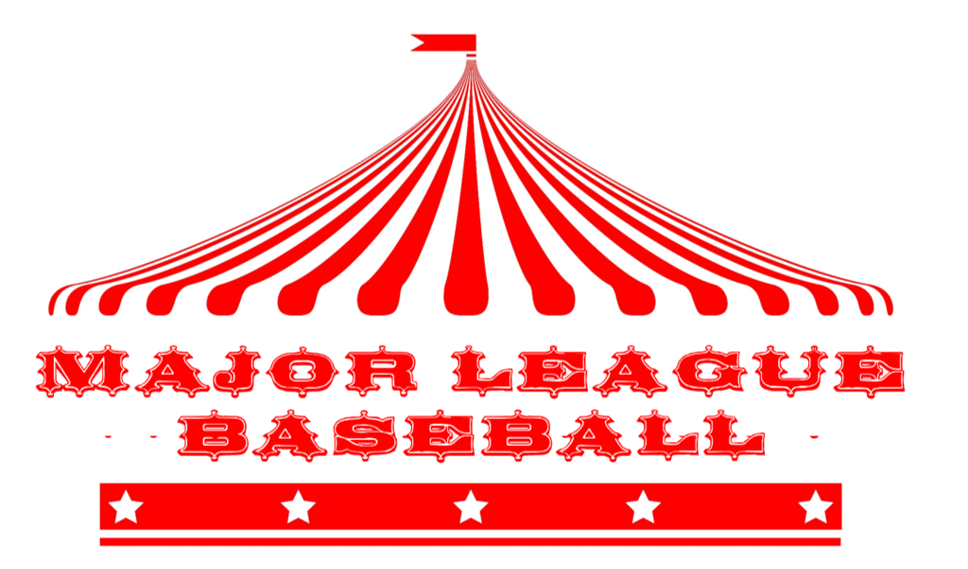
This is one of my favorite times of the winter – it’s the week when our favorite Major League Baseball teams take their respective diamonds in Florida and Arizona to work out the kinks and play an exhibition schedule. Last year’s World Series winner – the Washington Nationals – will receive their rings in a few weeks, but for the upcoming 2020 season, you can reset the baseball standings back to “0.” Every team will take the field with the same opportunity to play in the Fall Classic.
But will the games be carried on the radio?
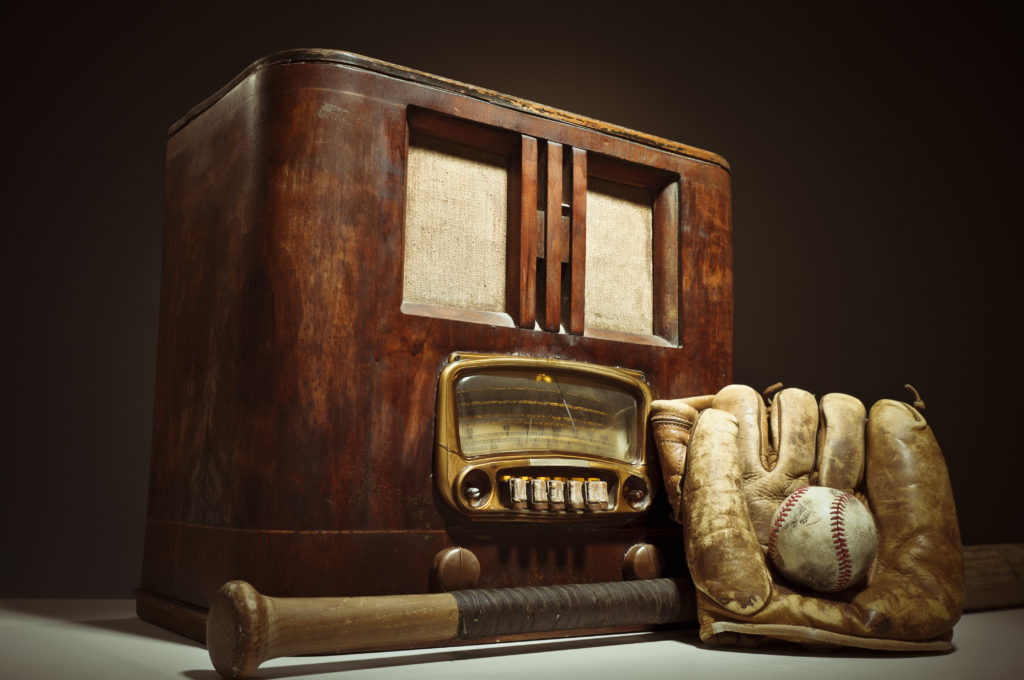 That may sound like a crazy question given baseball’s congenital relationship with the radio, first started nearly a century ago on KDKA for a Pirates/Phillies game in 1921. Since then, hundreds of thousands of games have been carried over the broadcast airwaves – on AM and FM radio stations.
That may sound like a crazy question given baseball’s congenital relationship with the radio, first started nearly a century ago on KDKA for a Pirates/Phillies game in 1921. Since then, hundreds of thousands of games have been carried over the broadcast airwaves – on AM and FM radio stations.
In recent years, these same games have been available on satellite radio, on audio streams on the MLB website and app – and of course on TV. But audio play-by-play coverage is now accessible on more sources than ever before.
Baseball’s demographics are aging. Or perhaps better put, young people are not as “into” baseball as their parents, grandparents, and great grandparents. Just like with traditional media like radio, newspapers, and television, American’s pastime is a sport much more appreciated by older demographic consumers.
Mashable’s Alex Perry quotes Nielsen Scarborough data showing the core demo for baseball is 50+ – not the target for most media buyers. (Of course, Perry notes the same study reveals baseball is more popular on radio than other media.)
Baseball needs to expand the tent, grow its fan base, create a little buzz among teens. But, of course, it’s suffered this same problem for years now, despite myriad efforts to make itself more attractive to young demos.
There’s no question baseball is struggling to figure out the disconnect. Does it have to do with the media platforms and devices on which these games are available? Or is it more about the appeal of the game itself to Gen Zs? Is it too slow? Or too complicated? Or simply associated with old-fashioned media?
We’re about to find out. That’s because the Oakland A’s – always a shoot-from-the hip franchise back to the days when Charlie Finley owned the team – are trying something brand new this year, and it has captured the attention of the sports and radio worlds.
In an effort to fight its own “demographic cliff,” the A’s have decided to end their rocky relationship with broadcast radio (12 different flagship stations since 1968), choosing instead to go exclusively with the audio streaming platform for the 2020 season.
TuneIn is now the sole source of free audio for A’s fans on their branded A’s Cast. And as A’s president Dave Kaval reasons, “The primary motivation 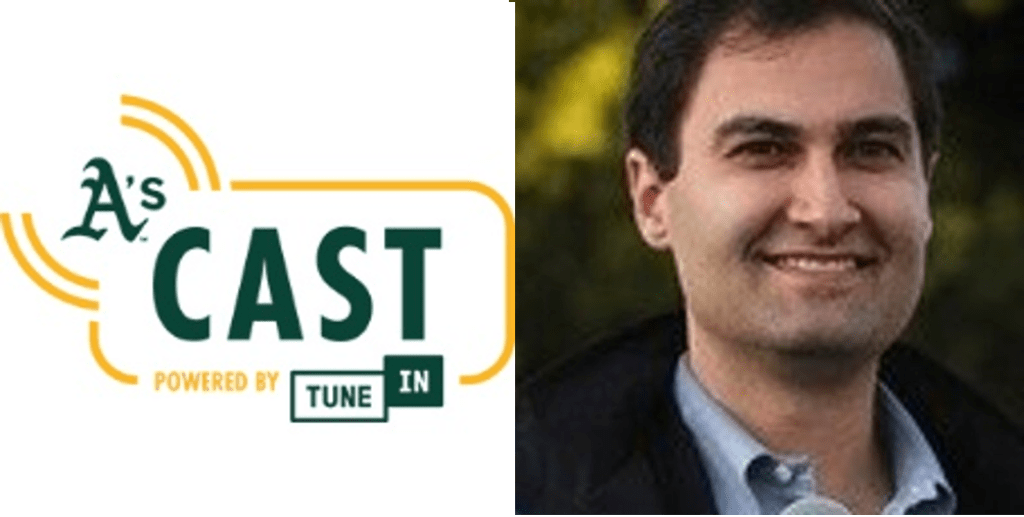 for this endeavor is around fan development, marketing, and really understanding how that can acquire new fans.”
for this endeavor is around fan development, marketing, and really understanding how that can acquire new fans.”
A think piece in the Washington Post by journalist Micki Maynard (ironically, a Detroit Tigers fan like yours truly) quotes Sports Illustrated‘s Emma Baccellieri who thinks the A’s move might catch on elsewhere around the league:
“I get it, and I wouldn’t be surprised if more teams make this move. But it still makes me sad.”
Micki Maynard’s sees it differently, and her conclusion is not a good prognosis for the A’s:
“I’m not buying it. This move will lose fans.”
I’m with her. There are very few times when addition by subtraction actually grows a fan base. This is clearly not one of them.
 Kudos to the A’s for attempting to appeal to younger demographics to ensure a brighter future. The team’s EVP, Billy Beane, has always been a riverboat gambler. Remember, he was the star of Michael Lewis’ “Moneyball,” the book/film that popularized the use of Sabermetric analytics – that is, insightful data used creatively to make core decisions about how to play and manage the game.
Kudos to the A’s for attempting to appeal to younger demographics to ensure a brighter future. The team’s EVP, Billy Beane, has always been a riverboat gambler. Remember, he was the star of Michael Lewis’ “Moneyball,” the book/film that popularized the use of Sabermetric analytics – that is, insightful data used creatively to make core decisions about how to play and manage the game.
But by closing the main pathway for its existing audience to consume the games via audio? That’s not going to work for those core baseball fans, even if their Bay Area team choice is the A’s over the Giants.
It violates the first law of the Digital Age – give consumers (especially fans) their desired content wherever and whenever they want it. That’s why broadcast radio has had to hustle its content on platforms and gadgets ranging from iPhones to Alexa – and everything in between in rrecent years.
And it’s a lesson the A’s forgot – and will likely ultimately live to regret.
While writing this post over the weekend, I noted the A’s were playing the Cubs in their first spring training game of the year. To get a sense for how these “webcasts” are packaged on TuneIn – the look, the sound, the accessibility – I punched up the app and searched for the team.
It popped up, I hit “play” and this happened. Three times:
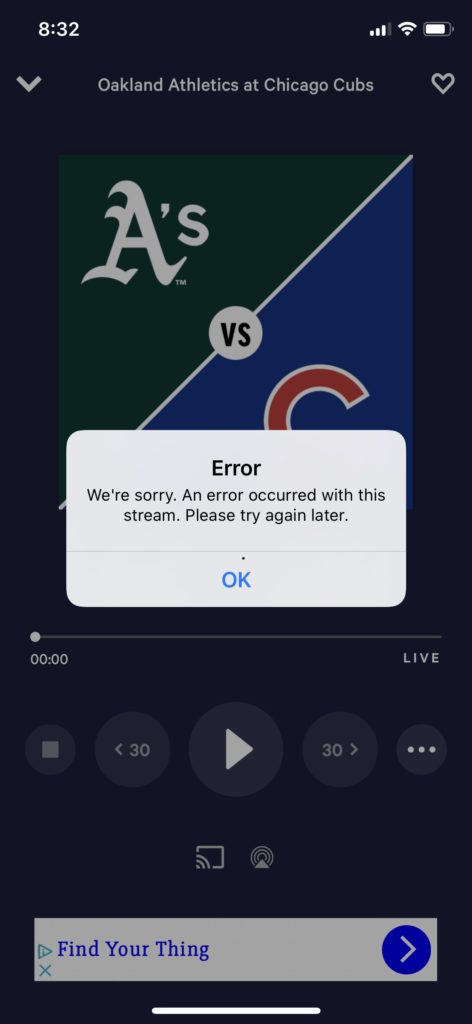
You can’t make this stuff up. This is something I’ve never experienced on the radio before. And while streaming technology has become a key conduit for content consumption by millions and millions of consumers, it is still miles away from 90%+ penetration and usage.
Like radio.
Kaval adds, “This is the direction of the future.”
That may prove to be true, but as broadcast radio operators would be happy to tell him, the challenge is meeting the demands of the future while taking care of business in the here and now.
It doesn’t take a technologist to tell you that not everyone’s car is “connected.” Or that while smartphones have become nearly ubiquitous, many consumers couldn’t download the TuneIn app, search for the A’s, and hit “play” if their lives depended on it. Assuming it actually works, of course.
This thread on the A’s Twitter feed is representative of what fans are saying about this grand streaming experiment. These are consecutive comments, not ones I selected to make my point. And it’s not pretty.
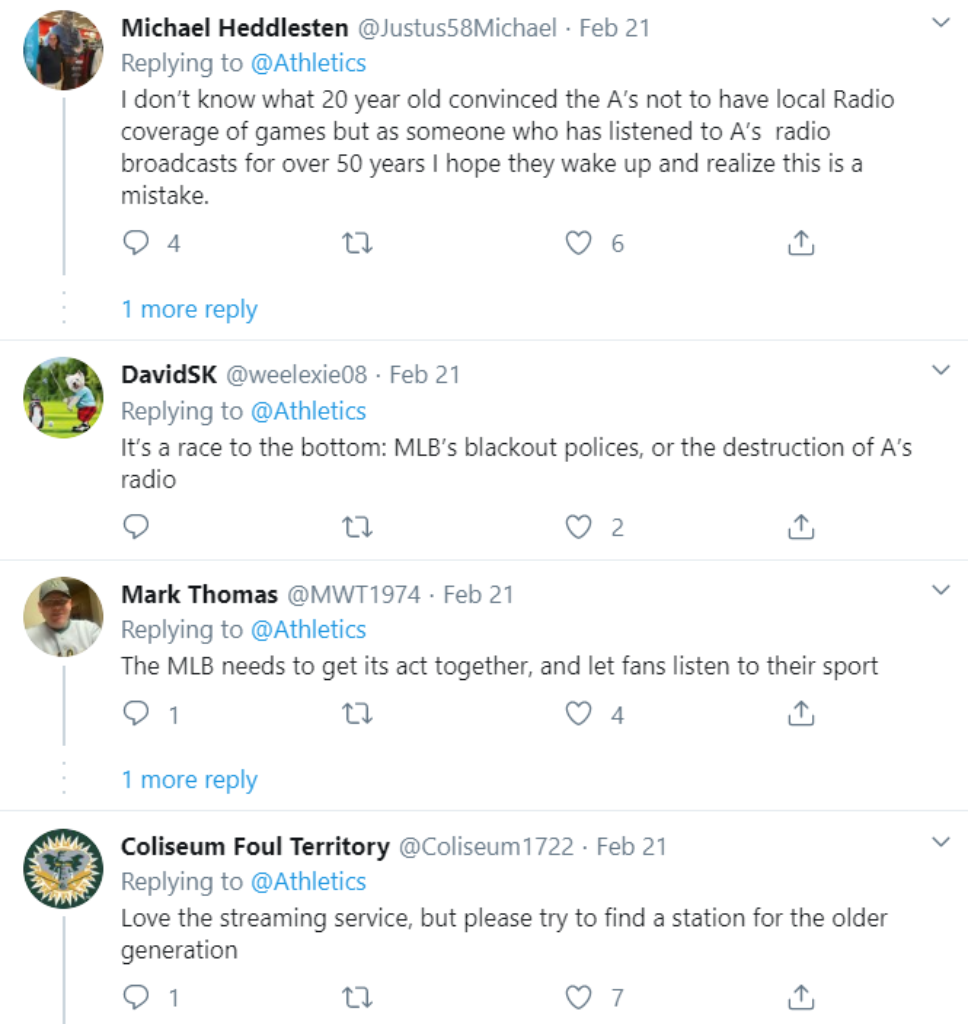
It’s about the experience – whether it’s on your iPhone or on your radio.
And you don’t expand your tent by cutting off ways to get in, participate, and engage.
In broadcast radio circles, we often talk about the need for the industry to tell a better story. In this case, the Bay Area radio market may end up with a great object lesson in what not to do – and why the medium still matters, even in a tech-centric metro.
President Gerald Ford had one of my favorites quotes on this topic:
“I watch a lot of baseball on the radio.”
He spoke for millions and millions of fans of all ages over the decades of home runs, balls, strikes, and a hot dog and a cold beverage on a summer’s day.
You have to wonder what they’ll be saying in Oakland this season.
I’ll be presenting at the Barrett Sports Media Summit on Thursday. I’ll break down our most recent Techsurvey with a deep dive on the Sports Radio fan. I have a feeling we’ll be talking about the A’s Cast and other issues. Info here.
- What To Do If Your Radio Station Goes Through A Midlife Crisis - April 25, 2025
- A 2020 Lesson?It Could All Be Gone In A Flash - April 24, 2025
- How AI Can Give Radio Personalities More…PERSONALITY - April 23, 2025




Is there a financial upside? Who pays whom in the team/radio relationship?
It’s negotiable – including inventory station sells. It depends on the team, the market, etc.
Seems like ratings vs. upside vs. cost must have created this decision. I’m at an age, and baseball background, where it seems shocking to pull an MLB team off radio. At the same time, saying that is platformism. The problem here is that radio’s ease-of-use and reliability are far superior to streaming via a third-party app. The whole thing will eventually move to voice-controlled smart everything — but that won’t get easy or ubiquitous (and cheap) for many years.
I live in Durham, a Triple-A minor league town with a very popular team. I’m a fervent fan. If the games departed OTA radio, it would be a meaningful inconvenience (especially in the car), even though I’m fluent and well equipped with streaming. It’s a good example of radio’s persistent advantages.
See my response to Tim Robisch. Ensuring the games are on broadcast radio is now table stakes. Teams may not profit on the games like they once did, but you have to serve your fans.
The A’s are the red headed stepchild in the Bay Area and that is the whole reason behind “Moneyball” (which has never produced a championship team by the way) and this move.
Because they didn’t have the money (and fan support), they had to invent look for value players; because they don’t have the money (and fan support) they can’t get a decent radio contract.
Baseball on a Salem station? Baseball is the LAST thing I think about when I hear them. Who did they have next to approach – K-Love or the NPR affiliate?
This isn’t them being “innovators”. It is a move driven by the lack of interest among the radio operators to give them anything for their product and their refusal to step up and sell it.
Mike, no doubt about this. The model has changed, especially for a second tier team in the market to the Giants. If you want to keep pace, and hold onto your fan base, you have to provide these radio broadcasts.
Baseball? Depending on an app?
Smh.
Ask IOWA how that turned out.
Great read Fred. Baseball is built on big sticks—radio and at the plate, radio and MLB have had a rich synergy for decades. Announcers, fan bases across the country are legendary.
Move to streaming only is the spin on the inability to strike a partnership with a local radio partner. Many factors including MLB’s bigger picture challenges and the demands teams make contribute to the challenge. Business demands and assumptions at both sides of the table drove this result. A’s would have a radio partner–teams want to make $$$ on the rights fees and broadcasters must operate prudently. It’s a shame.
It is, Tim, and the fans are the biggest losers. As radio has learned, there are times when you have to provide content on platforms that may not provide the past margins – or ANY margins. But it’s the cost of doing business, and serving your fan base.
Fred, thanks for addressing this here. Brilliant take, and I couldn’t agree more. The A’s have really blown it and I hope pride doesn’t get in the way of their finding a way to make it right.
There’s still time between now and Opening Day, Wayne. 🙂
Saturday was this spring’s first New York Yankee radio broadcast. One of my secret pleasures is listening to John Sterling and Suzyn Waldman do the games. Its an acquired taste. Yes. John misses a lot of call (but who of us doesn’t) and yes, Suzyn agrees with everything John says. But that’s part of its charm. No one does it better. Now if I could also listen to the games on Radio.com that would be wonderful. Unfortunately, Major League Baseball sells its internet rights separately from its broadcast rights.
Those PBP teams become part of the family. I enjoy Dan Dickerson & Jim Price calling Tigers games, but truth be told, I still miss the incomparable Ernie Harwell. Thanks, Steve.
The other part of the problem is not an A’s problem but a league problem. MLB refuses to loosen up their rules regarding online streaming, which would be a key catalyst to attracting that younger demographic. Forget the A’s, if Cubs, Red Sox, or Yankee fans could stream the games on their flagship stations websites, a whole new genre of people would pay attention and advertisers would flock. But baseball still lives in the dark ages when it comes to media sensibilities. That said, your piece is right on Fred, and will definitely prove to be a mistake on the part the team
Appreciate the expert POV on this, Jason. It all seems so limiting at a time when MLB has to be welcoming. Thanks!
Baseball was seemingly almost meant for summer nights on the front porch with a transistor radio. Like the late President Ford, I’m sure millions of us enjoyed watching baseball on the radio.
Still do, Dave, still do.